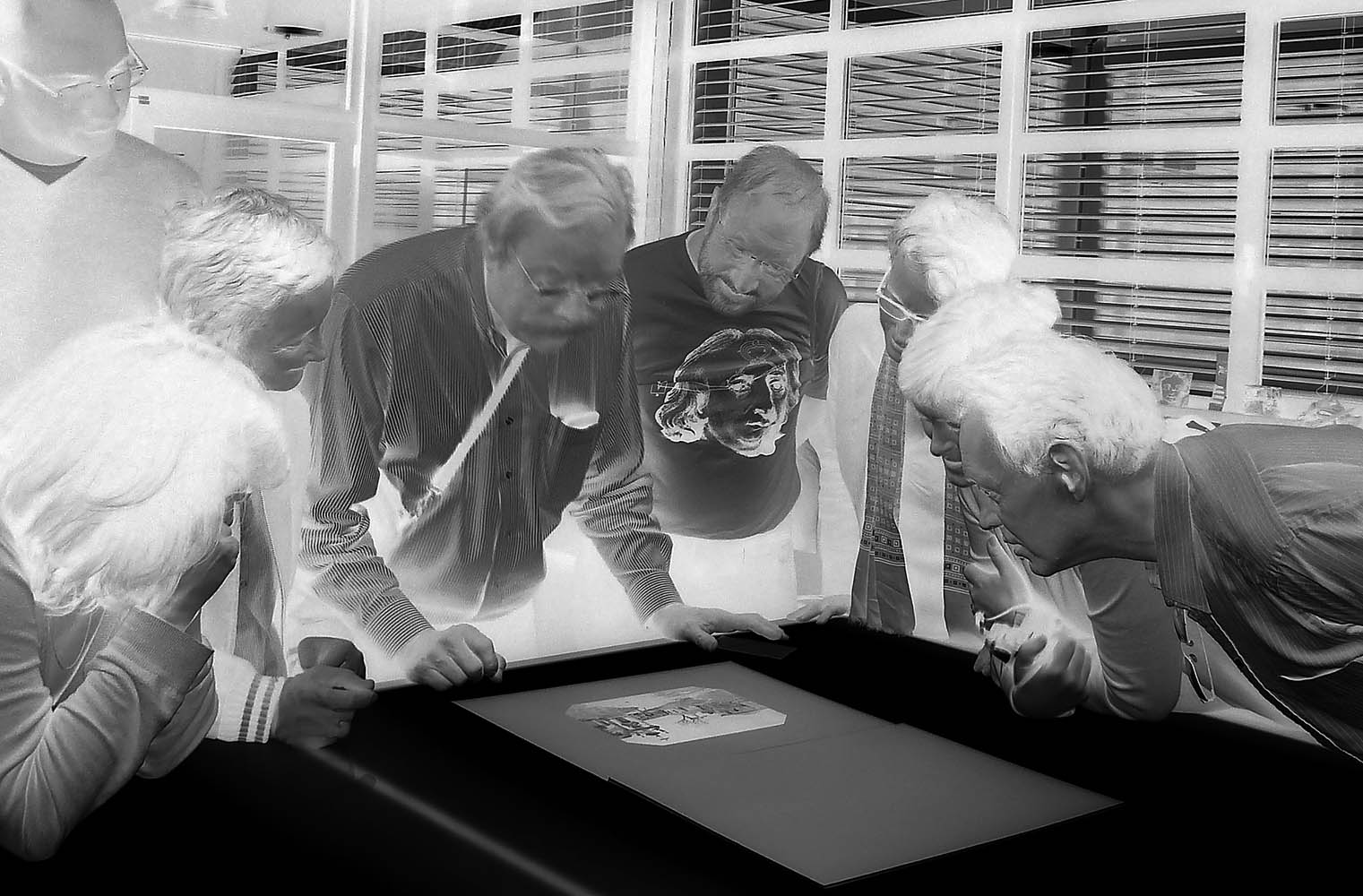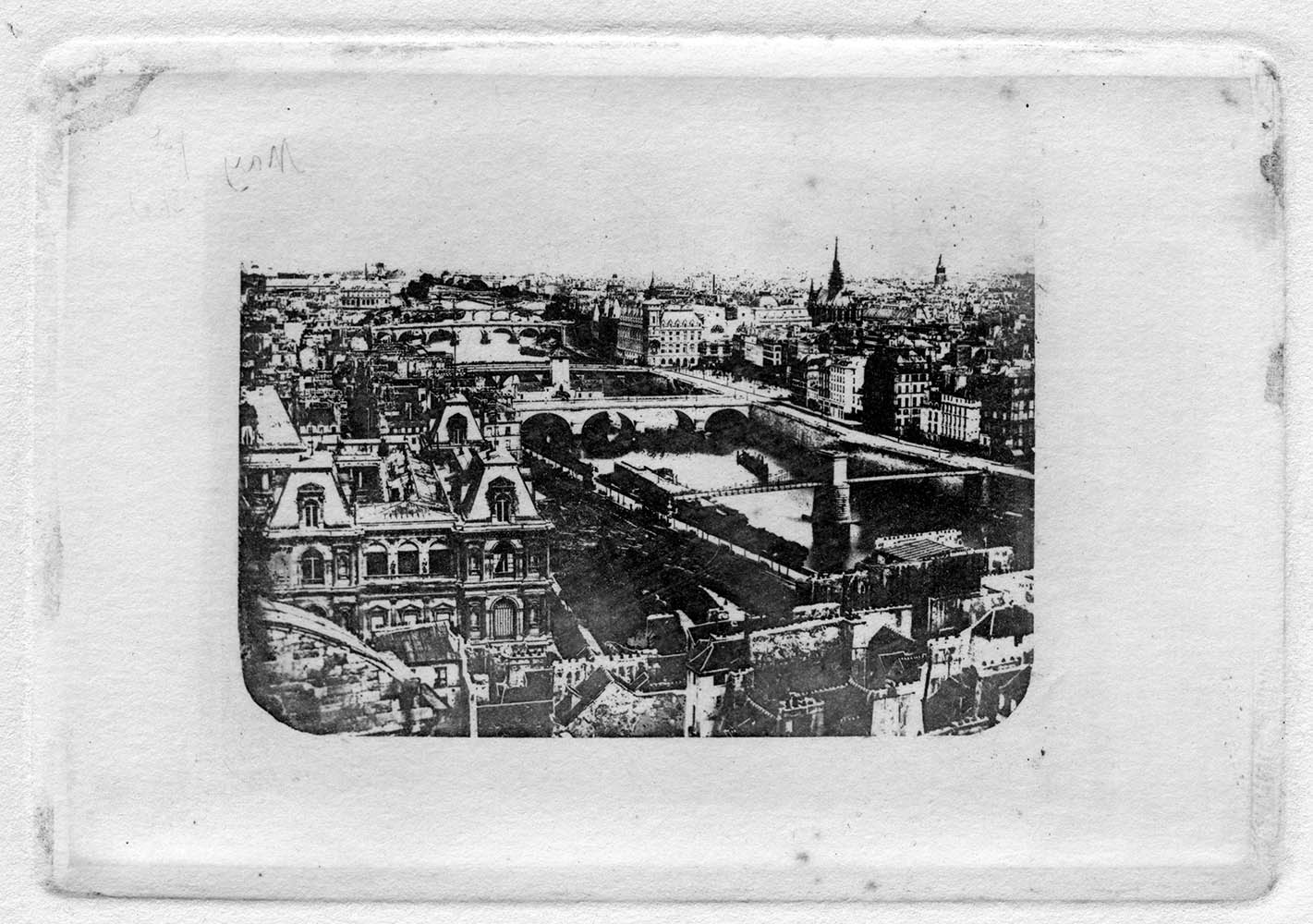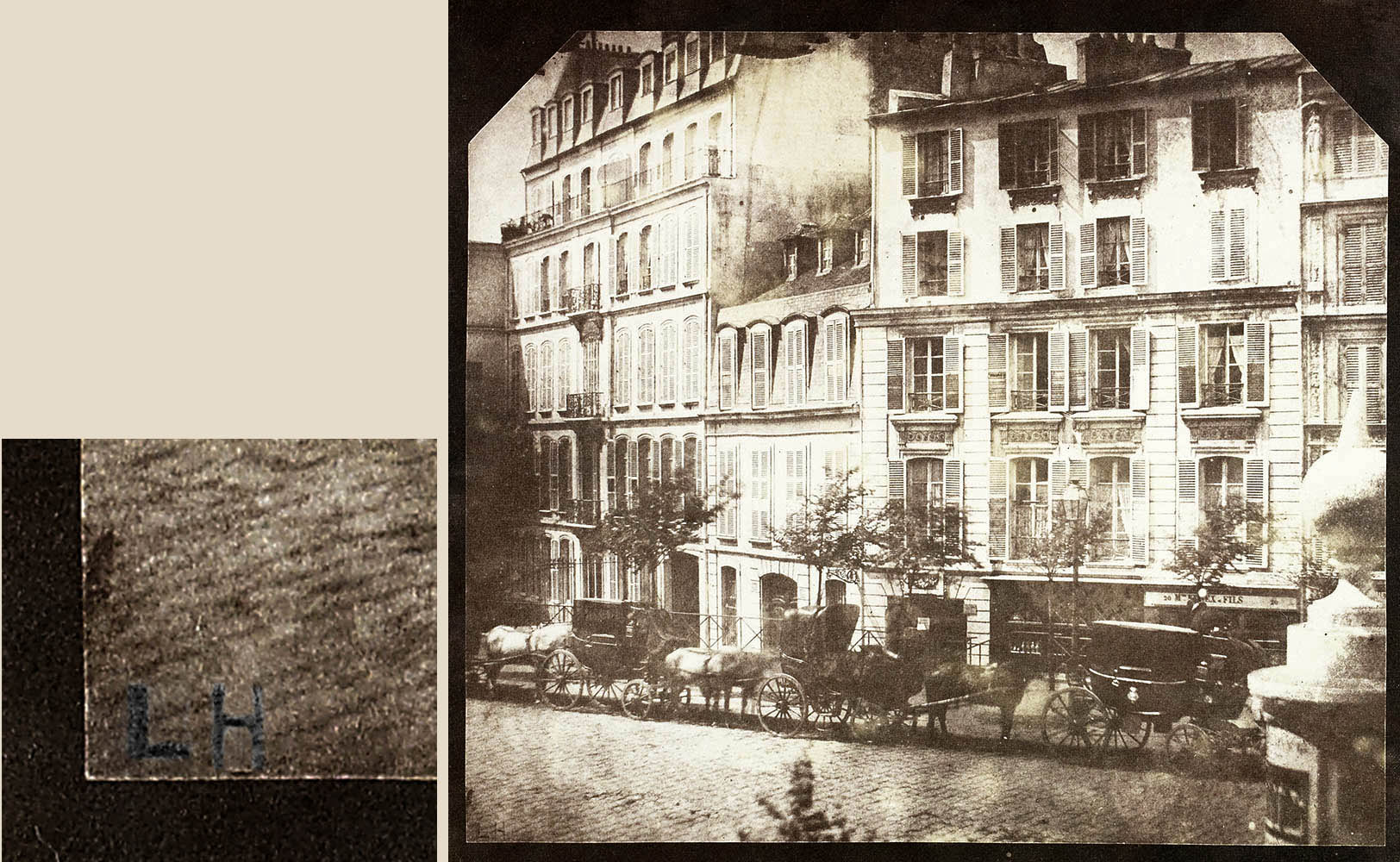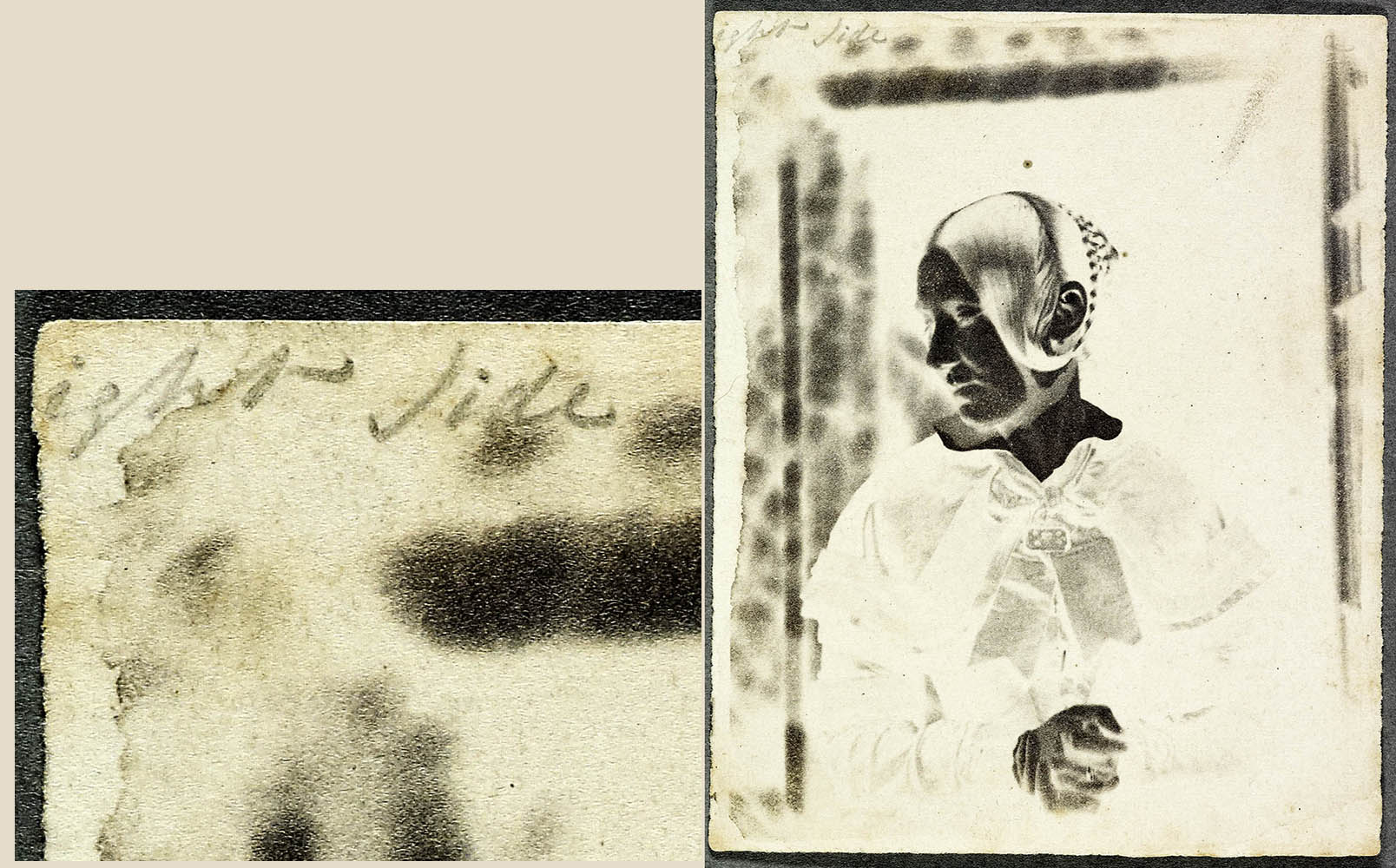This past week I was honored (and pleasantly surprised) to be included on the menu of the 2016 Stereo & Immersive Media conference in Lisbon, Portugal. Even though my daily grasp on reality often seems so tenuous that venturing into virtual reality was intimidating, it was a fascinating and richly rewarding experience for me.
My own talk was titled The Virtues of Reality: Henry Talbot, Nature and Imagination. Attempting to fit within the remit of the conference, I opened with my old friend Charles Piazzi Smyth featuring his and Jessie’s pioneering stereo photographs at Teneriffe and in the Great Pyramid in Egypt. Not to ignore the sound component, I ended with the (then illegal) recording of Matilda Talbot’s 1951 BBC interview. There were some excellent presentations about sound, but my attention drifted towards the visual. Nicholas Wade gave a spirited and informative lecture on Seeing With Two Eyes and Hearing With Two Ears. Gerlind-Anicia Lorch’s substantial scholarship was clearly elucidated in TheVirtual Sublime: William England’s Stereoscopic Travel Photography within the context of the sublime. The Curator of Brian May’s London Stereoscopic Company, Denis Pellerin, supplied us with 3D glasses and made a persuasive case for The First Movie Ever Was in 3D. Pete James presented a summary of Thresholds, the fascinating virtual reality project that he is creating with Matt Collishaw that will be an interpretation of Henry Talbot’s major first photographic exhibition, held in Birmingham in August 1839 (where poor Talbot was put in the position of having to explain Daguerre’s freshly-revealed process to the members of the British Association for the Advancement of Science). We’ll see more about this exhibition in a blog in the near future.

Since one of Henry Talbot’s major accomplishments was the concept of the negative, a special excursion the day before the conference was particularly relevant. Frederick William Flower (1815-1889) was an accidental Scot who moved to Porto (Oporto for our British readers) and set up to be a calotypist. While not many of his prints survive, substantial numbers of his calotype negatives are preserved in Lisbon’s Arquivo de Documentaç�£o Fotográfica, very well defended in a former seafront fort. Alexandra Encarnaç�£o, assisted by Emília Tavares, had obviously gone to a great deal of effort to give us a rich presentation of this unusual archive. Flower had a clear mastery of the calotype and what is most extraordinary is that in spite of the passage of more than a century and a half these negatives are in remarkably good condition. They take us back through time, not only with their documentation of Portugal, but their quality immerses us in the visual excitement of seeing Nature’s drawing at her best.
And now we turn to Sir Charles Wheatstone (1802-1875), largely known for his work in electricity, especially the telegraph, and for his invention of the stereoscope. Wheatstone and Talbot had a very close scientific relationship and had circumstances been a little different we might have seen a number of inventions jointly produced by them. On 13 March 1839, he wrote to a colleague about “the recent discussion regarding Photography or Heliography…some weeks ago I communicated…the modes in which I proposed to apply Mr Talbot’s prepared paper or the more sensible preparation of Messrs Niépce and Daguerre to enable us to register the indications of the Thermometer, Barometer, and other meteorological instruments including the Magnetometer.” It is not surprising that Wheatstone initially viewed photography as a scientific recording instrument, but it wasn’t long before he melded the new art with his invention of the stereoscope. His first demonstrations in the instrument had been “confined to outline geometrical figures” but photography offered the promise of much more vivid pictures of the real world. As he recalled in 1879,
Henry Collen (1797-1879) was a fascinating figure but I’ll have to reserve much comment about him for a future post. A miniature painter (and later an inventor of colour photography and a spiritualist), he combined an understanding of science with excellent royal and societal connections. In 1841 he had the courage to become Talbot’s first licensed portraitist. In 1854 he reminisced: “In 1841, when I was one of the very few to make use of Mr. Talbot’s process, Mr. Wheatstone not only had the idea of making photographic portraits for the stereoscope, but at his request, and under his direction, in August of that year, I made a pair of stereoscopic portraits of Mr. Babbage, in whose possession they still remain.” This of course was the same Charles Babbage who we have seen was instrumental in promoting Talbot’s photography to society.
Many people have looked for this early portrait of Babbage, but unfortunately without any success. According to Collen, this portrait was a success, but for a primitive photographer it was a daunting process: “on account of the comparatively long time…required for the consecutive sittings for two pictures, without movement on the part of the sitter. Let it be remembered as an additional excuse for not doing so, that there were in those days, optical, as well as chemical and photographic difficulties to contend with, quite sufficient to occupy the early photographers without adding to them.” Collen was using a single camera, changing its angle between exposures.
However, before Collen, Henry Talbot himself had tried to assist Wheatstone. On 15 December 1840, just weeks after Talbot had discovered the calotype, Wheatstone had already benefited from the newly-sensitive developed negative. “I thank you for the photographs you have made for the stereoscope; they do not exactly answer the purpose as the angle you have taken (47 � �) is too large and the differences in the two pictures are consequently too great, but they are sufficient to show that the effect when properly produced would be very good. 25 � would be a much better angle.” Like Collen, Talbot had used a single camera and apparently there was a noticeable time lag between the two exposures. “There is one precaution necessary to be taken to ensure the proper result; the two pictures should not be taken at times when the shadows of the object fall differently; they should either be taken one immediately after the other or, which would perhaps be better, at the same time on two successive days. A bust will be a good binocular object, but a carriage or a piece of machinery would, I think have an excellent effect.” We do not have any idea what the subjects of these pictures might have been. Some writers have suggested the always reliable bust of Patroclus but Wheatstone’s wording argues against these first images being of a bust.
Wheatstone began exploring other paths to use photography to replace hand-drawn art in the stereoscope. In 1841, John Frederick Goddard accompanied him to the studio of Richard Beard to secure a stereo daguerreotype portrait. In 1842, he commissioned Antoine Claudet in London and Louis Fizeau in Paris to make stereo daguerreotypes. Although we have only fragmentary correspondence, it is clear that Talbot kept working with Wheatstone. In February 1841 Wheatstone advised that “8 inches by 7 will be too large for the Stereoscope pictures; I should prefer the size of those you have already sent me.”
By now the astute reader will have figured out that I have no Talbot stereo photographs to show. So far nothing has been discovered in either Wheatstone’s nor Henry’s archives. However, perhaps we can turn to Charles Piazzi Smyth for a partial solution.
In 1865, he and Jessie ventured to the Great Pyramid in Egypt in order to take scientific measurements of this wonder of the ancient world. As a self-financed ‘poor man,’ he could not take along the multiple cameras and other equipment necessary for conventional photography. He devised and built an all metal camera that took one-inch square wet collodion negatives in a sealed system. In his later account, Piazzi pointed out that as long as you had photographs taken from two different points of view these could be combined into a proper stereo photograph.
 So when the ever-inventive Denis Pellerin spotted two Talbot photographs in a recent exhibition, he quickly calculated that a stereo pair could be forced out of them. Of course Talbot himself had never intended doing this, but I cannot help but think that he would be amused by the idea all the same. If you have the right glasses, go ahead and enjoy Denis’s anaglyphic construction.
So when the ever-inventive Denis Pellerin spotted two Talbot photographs in a recent exhibition, he quickly calculated that a stereo pair could be forced out of them. Of course Talbot himself had never intended doing this, but I cannot help but think that he would be amused by the idea all the same. If you have the right glasses, go ahead and enjoy Denis’s anaglyphic construction.
While so far the search for a Talbot stereo pair has remained elusive, I can provide a couple of tempting hints. Perhaps as the Catalogue Raisonné advances there will be others that might possibly complete a set. The first thought-temptation is on a print in a Talbot album
Down in the lower left of the print is a strong pencil annotation, “LH”. There are no known collaborators of Talbot or Henneman with these initials. Perhaps it could signify the left hand side of a panorama but given the visuals here it would certainly have been an ungainly one. With the post in the foreground, it seems to me that the most reasonable explanation is that this the the left hand print of a stereo pair.
The other is a photograph from Talbot’s friend, the Rev Calvert R Jones. It is a beautiful portrait of his wife Anne, her characteristic hairdo gleaming within the door frame.
What else could the pencil annotation “Right Side” on this negative mean? If this supposition is correct, the stereo effect must have been stunning.
Talbot remained indirectly involved with Wheatstone’s stereo. In 1852, Nicolaas Henneman (with his characteristic spelling) reported to his former employer that “the Duke of Willengton, the Marquis of Lansdown and a great many of the nobility have seen the Talbotypes for the Stereoscope at Professor Wheatstones room at Kings College and Where highly delighted with them.” I have not found a record so far about this exhibition. However, Henneman went on to produce some stereo cards for sale in his London studio.
Talbot himself employed stereo photographs in a different way. In the 1850s as he was working strenuously to perfect his photogravure processes, he needed glass positives of a convenient size for testing and demonstration. One-half of a stereo pair was perfect for his purposes. Many photographers were more than happy to supply him with these and much of his support came from France. Charles Soulier, of Clouzard and Soulier, was one of these, writing in 1858: “we give you permission to use our small proofs which we did not think would be destined for such an elevated purpose. The result of which you have informed us is full of promise: this time, the camera obscura image will be definitively traced & printing will become a reliable and easy operation. That was the main problem which had to be resolved … until now, as you say, Sir, the attempts at heliographic engraving were far from achieving the proposed aim, & the difficulty of preserving the degradation of tones seemed to be an almost insurmountable obstacle.”
 Soulier continued, “Your previous work has, in our eyes, formed photography. It was left for you to turn it to engraving without the help of an engraver.”
Soulier continued, “Your previous work has, in our eyes, formed photography. It was left for you to turn it to engraving without the help of an engraver.”
Our conference ended with a brace of field trips. One was to the conservation and daguerreotype atelier of Luis Pav�£o. We have seen his splendid tiled façade tribute to the inventors of photography in a previous post. He was a great host, freely opening his domain to the curious and happily sharing the work that he and his students are doing.
An unexpected delight on our last day was a visit to Carlos Relvas’s (1839-1894) studio and house in Goleg�£, about 100 km. NE of Lisbon. Built in 1876 with a glass and iron top floor ideal for studio portraiture, it was lovingly restored in recent years and is available for tours. It is the only surviving example that I know of anywhere in the world of the sort of grand studio that got its start in the Daguerrean days – palaces for photography that combined showmanship and display to actively court customers. Personally, I experienced the thrill of walking in the footsteps of Grant Romer and France Scully & Mark Osterman and other fine modern practitioners who had already made this pilgrimage. You should create the opportunity to do so as well.
Larry J Schaaf
• Questions or Comments? Please contact digitalsupport@bodleian.ox.ac.uk • Nicholas Wade, Negative of a group examining a negative, Lisbon, 2016. • Letter, Wheatstone to Robert Ware Fox, 13 March 1839, Archives of The Royal Society, London, RS Fox 119. • The Scientific Papers of Sir Charles Wheatstone (London: Taylor and Francis, 1879), p. 268. • There are many studies of Wheatstone’s stereography; a succinct overview of his early work is by Steven F. Joseph, “Wheatstone’s Double Vision,” History of Photography, v. 8 no. 4, October-December 1984, pp. 329-332. • For more on Collen, see my “Henry Collen and the Treaty of Nanking,” History of Photography, v. 6 no. 4, October 1982, pp. 353-366. • Henry Collen, “Earliest Stereoscopic Portraits,” Journal of the Photographic Society, v. 1 no. 16, 21 April 1854, p. 200. • Wheatstone to WHFT, 15 December 1840, Talbot Correspondence Document no. 04172. • Wheatstone to WHFT, 24 February 1841, Talbot Correspondence Doc. no. 04198. • Denis Pellerin, Dancer following Henry’s command, created and creative stereograph, 2016. The original WHFT images on which he based this are in the National Media Museum, Bradford, 1937-2839/2; Schaaf 2032; and 1937-2840/2; Schaaf 2031. • Henneman to WHFT, 3 May 1852, Talbot Correspondence Doc. no. 06604. • WHFT, Boulevards of Paris, salt print from a calotype negative, 1843, National Media Museum, Bradford, 1937-2533/30; Schaaf 128. • Calvert R Jones, Portrait of Anne Jones, calotype negative, mid 1840s, National Media Museum, Bradford, 1937-3527; Schaaf 2168. • Nicolaas Henneman, Paris, stereo photograph, ca. 1852, private collection. • Charles Soulier to WHFT, 6 October 1858, Talbot Correspondence Doc no. 07091. • WHFT, Paris, Experimental photoglyphic engraving, 1 May in the early 1860s, courtesy of Hans P Kraus, Jr, Inc.









